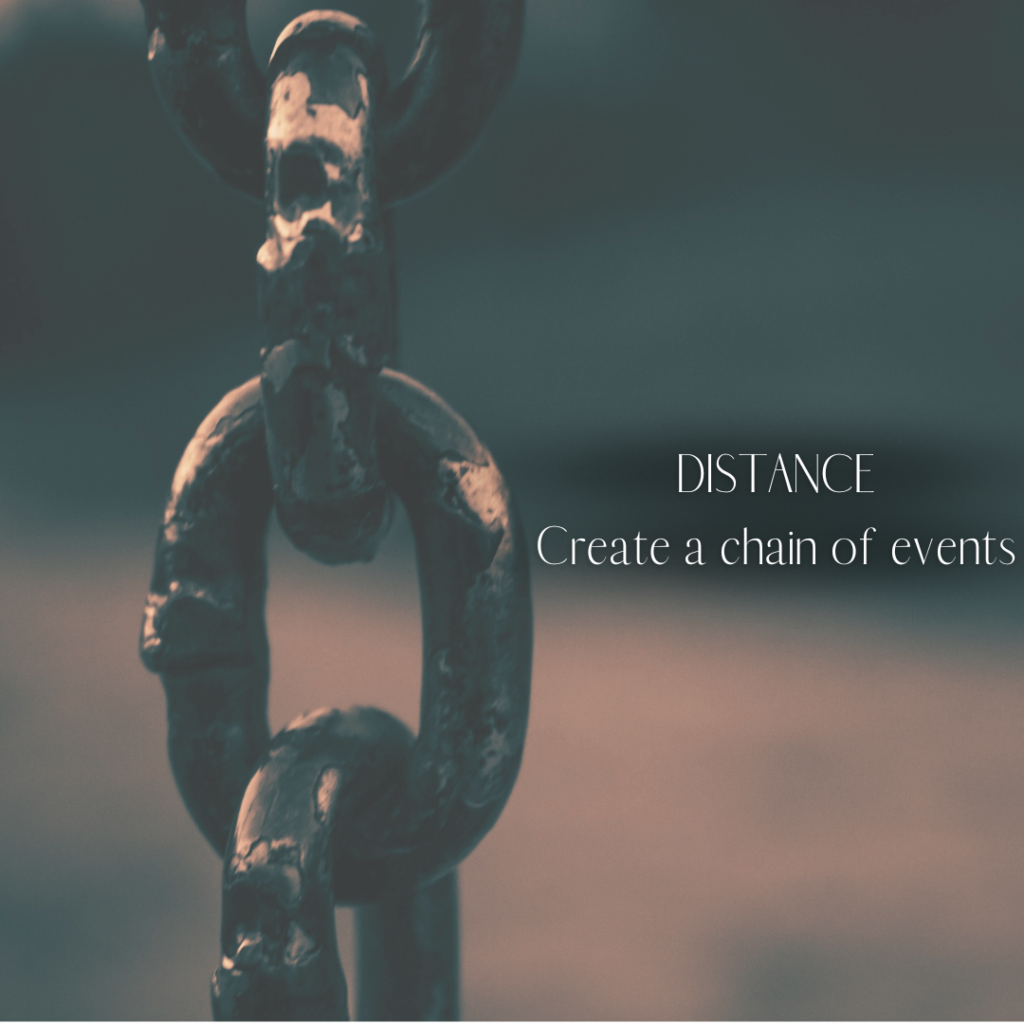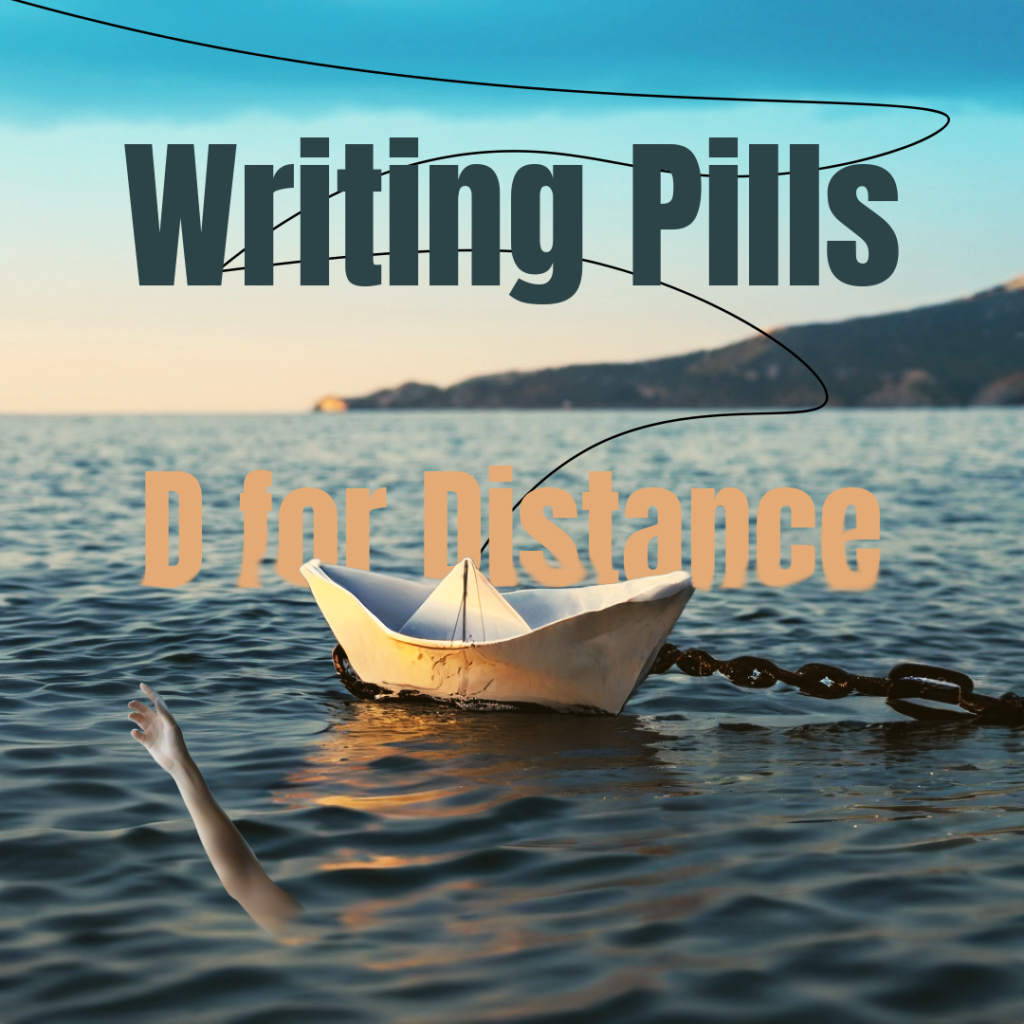D for distance, happy we’ve got 2 more Ds?
Create a chain of events, with distance
First comes the study of your characters, now it’s time to create some distance between them and their objectives. They start existing, walking, speaking, lighting a cigarette, or obsessively emptying a whole pack of gum. You started talking to them, and now they are answering you, so you’re ready to write their story. You must have a plot already in your head, but without a good study of your character, your story will result in something flat.
So now you need to adjust your original idea to fit with the characters you created. Let’s imagine you wrote a book about Alan, a drug addict who wants his family back but doesn’t want to stop using. Has he got a mum, dad, brothers or sisters, and some friends?
What does his family look like and what do they want from him? Why is he so obsessed with their love and cannot leave them behind? Maybe he’s using drugs because of them, because of something that happened and he’ll uncover it later in the story?
Create distance

Many questions arise when you think about your characters’ purposes and desires. However, if it were simply a matter of wishful thinking or cause and effect, we would be discussing Pavlov’s experiments with dogs rather than telling a story. Creating a narrative of an experience or an idea has to be similar to a chain; the longer this chain is between the characters and their desire-objective, the better for the reader. Thus, you create distance.
Mr. Bean, are you OK?
For example, let’s use Mr. Bean as our reference. The scene starts and we know he needs to accomplish an effortless task: buying shoes or washing his hands, it doesn’t matter. What works is that he cannot achieve anything due to his clumsiness and lack of common sense.
We start exclaiming something like “Oh, come on, don’t do that” or “Watch out”, but deep inside, we want him to fail. Not at the end, no. After all, we want him to buy shoes or wash his hands. We’re not cruel, we like him. What we really want, though, is to be entertained, and we need him to pass through every ring of the chain of events before reaching his final goal. As simple as that.
So, that’s distance. Create a character obsessed with reaching a lake, put him in between a mountain with a bear hunting him, and make him allergic to bees (or to bear’s fur, just for fun). The Desire will push over his limits; his background will make the reader glued to the book, avid to read more of the adventures ahead. The distance will ultimately make the story what it is: a long chain of events.

Let’s recap: we determine our characters’ desires and create obstacles that prevent them from achieving them through distance. Now, what? Now, it’s time to work with the audience, the readers. Let’s play a bit with them; let’s make them believe our character isn’t going to make it; let’s create some tension. That’s what the next D stands for: denial. That’s what it really is all about, at the end. Any story is made of ups and downs, tension and relief. When I write a story, I usually produce a chart with the salient part of the whole story and a curve that goes up and down. We will speak about this matter in another pill. Still, it’s essential to remember that attention also rises when tension rises. When pressure is relieved, it’s good for the reader to relax, but not too much, or their interest will plummet. And we don’t want our story to die!
So, as promised, to distance will follow the third D, denial. Read more in Scrivere, in pillole and stay tuned!

Leggere è di importanza cruciale, in quanto aumenta la capacità di focalizzare l'attenzione, la memoria e le dote comunicative in generale. Qui, su Flyingstories, puoi leggere gratis storie che possoono aiutarti a studiare italiano e inglese. Puoi cambiare la lingua del sito quando vuoi, cliccando sulla bandierina. In questo modo, puoi leggere le storie gratis in lingua italiana e inglese.
Non sei pronto a leggere una storia lunga come Ritorna al futuro o Anime vive? Tranquillo, pui sempre leggere le storie brevi in italiano e in inglese!
Questo articolo è scritto dallo scrittore e copywriter Daniele Frau.